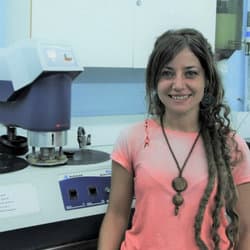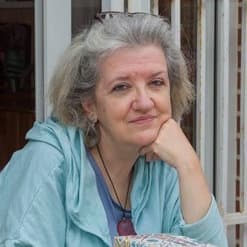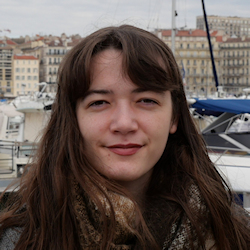Dr Francisco Martínez-Sevilla (PI)
University of Alcalá. Prehistory Area. Department of History and Philosophy
Dr Martínez-Sevilla’s lines of research are the early Neolithic societies of the Iberian Peninsula and the Mediterranean and the technological analysis and use-wear of material culture, especially macrolithic tools.
Dr Primitiva Bueno Ramírez
University of Alcalá. Prehistory Area. Department of History and Philosophy
An expert in the diverse material and symbolic expressions of megalithic culture, Dr Bueno Ramírez has done fieldwork on megaliths in the Iberian Peninsula, France, England and Germany. In her research, she has developed protocols for the analysis and detection of paint in funerary decorations and revealed its presence at iconic archaeological sites on the peninsula.
Dr Rosa Barroso Bermejo
University of Alcalá. Prehistory Area. Department of History and Philosophy
Dr Barroso Bermejo’s research focuses on the Chalcolithic and Bronze Age societies of the Iberian Peninsula, particularly their funerary and symbolic practices.
Dr Miriam Cubas Morera
University of Alcalá. Prehistory Area. Department of History and Philosophy
Dr Cubas Morera’s research is centred on Neolithisation processes in southern Europe, with a special emphasis on the role of pottery technology in the introduction of agriculture and animal husbandry.
Dr Leonor Peña Chocarro
Spanish National Research Council / CSIC (Madrid)
Dr Peña Chocarro’s line of scientific research is the study of pre-industrial agriculture through archaeobotany, specifically the analysis of seeds and fruits found in archaeological contexts, and the ethnoarchaeological study of contemporary societies that still practice non-mechanised farming.
Dr Mercedes Murillo Barroso
University of Granada. Department of Prehistory and Archaeology
In her archaeometallurgical research, Dr Murillo Barroso studies the origins of metal technology, from technological production processes to the chemical composition of metals to determine their provenance.
Dr María Martín-Seijo
University of Cantabria. Department of Historical Sciences
The primary objective of Dr Martín-Seijo’s research has been to study how human communities of the past used wild plant resources, mainly wood. Her contributions can be grouped into three main categories: 1) use of fuel and management of wood resources in the northern Iberian Peninsula; 2) artisans and crafts based on plant materials; and 3) plants and people in the tropics (Panama and Taiwan).
Dr Eva Fernández Domínguez
Durham University. Department of Archaeology
Dr Fernández Domínguez is an associate professor in Ancient DNA and director of the Archaeo-DNA Laboratory of Durham University’s Department of Archaeology. She is specialised in the archaeo-genetics of human populations, with a particular interest in the early farming societies of the Near East and the Iberian Peninsula.
Rubén Pardo Martínez
University of Granada. Department of Physical and Human Geography
Mr Pardo Martínez’s field of research is pedoanthracology, which studies soil charcoal to determine vegetation dynamics over the last several millennia. This method provides more detailed information on the possible conduct of human communities and their interaction with the environment.
Dr Rafael Martínez Sánchez
University of Córdoba. Department of Prehistory and Archaeology
Dr Martínez Sánchez studies human societies of the past from a biocultural perspective (what some might call eco-functionalism). His interests include the Neolithic cultures of the southern Iberian Peninsula and the northwestern tip of Africa, and the western Mediterranean in general, as well as zooarchaeology and relations between humans and other animal species in late prehistory.
Dr Manuel Altamirano García
National Distance Learning University / UNED (Córdoba)
Dr Altamirano García’s research focuses on studying and classifying hard materials of animal origin and their role in late prehistoric societies, with a special interest in typological aspects and manufacturing processes, as well as the symbolic importance of raw materials and artefacts.
Dr Raquel Piqué Huerta
Autonomous University of Barcelona. Prehistory Department
In her research, Dr Piqué Huerta studies the dynamics of social change from a diachronic perspective. Her goal is to investigate how societies organised the production and consumption of resources, particularly those of plant origin, either as food or to fashion goods and tools.
María Herrero Otal
Autonomous University of Barcelona. Prehistory Department
Ms Herrero Otal has a BS in Biology and an MSc in Biological Anthropology (specialising in Physical and Forensic Anthropology) and is currently working towards her doctorate. Her line of research focuses on the taxonomic identification of plant fibres used to make different products in prehistoric times and the treatments applied to raw materials. She studies the direct remains of basketry and cordage as well as deposits of dental plaque that contain mineralised plant fibres.
Dr José Antonio Lozano Rodríguez
Spanish Institute of Oceanography, Canary Islands
Dr Lozano Rodríguez is a geologist specialised in the petrology and geochemistry of ophiolites and volcanic rocks in general, and in the application of this knowledge to archaeology. His primary field of archaeological study is the lithic industry and its circulation on the Iberian Peninsula in recent prehistory.
Dr Antonio Álvarez Valero
University of Salamanca. Geology Department
Dr. Álvarez Valero is a geologist specialised in petrology and geochemistry. His particular area of expertise is using stable isotype analyses to determine the origin of rocks.
Dr Ruth Maicas Ramos
Conservator at the National Archaeological Museum (MAN)
Dr Maicas Ramos is conservator of the Prehistory Department at the National Archaeological Museum in Madrid. Her fields of research include the analysis of the bone industry of the Neolithic and Chalcolithic periods (the subject of her doctoral dissertation), and in recent years she has been focused on symbolic representations and the history of archaeology.
Dr Jonathan Santana Cabrera
University of Las Palmas de Gran Canaria
Dr Santana Cabrera’s area of research is bioanthropology applied to the prehistoric population of the Canary Islands and the formation of complex late prehistoric societies in the Near East and the Iberian Peninsula.
Dr Antoni Palomo
Museu d’Arqueologia de Catalunya / Autonomous University of Barcelona
Dr Palomo’s lines of research have focused on the use of lithic technology and experimental archaeology to study the late prehistoric societies of the Iberian Peninsula.
Ingrid Bertin
Autonomous University of Barcelona, Prehistory Department.
Ms Ingrid Bertin has a BS and MSc in Prehistoric Archaeology, with a specialisation in archaeobotany. She is currently working on her PhD in biomolecular archaeology. She studies proteins and lipids from prehistoric plant-based artefacts to obtain taxonomical identification of the raw material (e.g. wood, fibres, adhesive, dye) but also to identify the composition of other processed products in the artifacts (e.g., food crusts) that are related to their direct use.
Anna Homs
Independent researcher
40 years as a teacher and 40 years researching natural dyes, printing of textiles with natural dyes, the spinning of fibers of natural origin in different historical stages, the first textiles of humanity and the search for fibers in the field, in addition the elaboration of basketry with different materials and techniques. During the last years she has participated in different cultural organizations disseminating her knowledge in historical demonstrations and research projects.




















